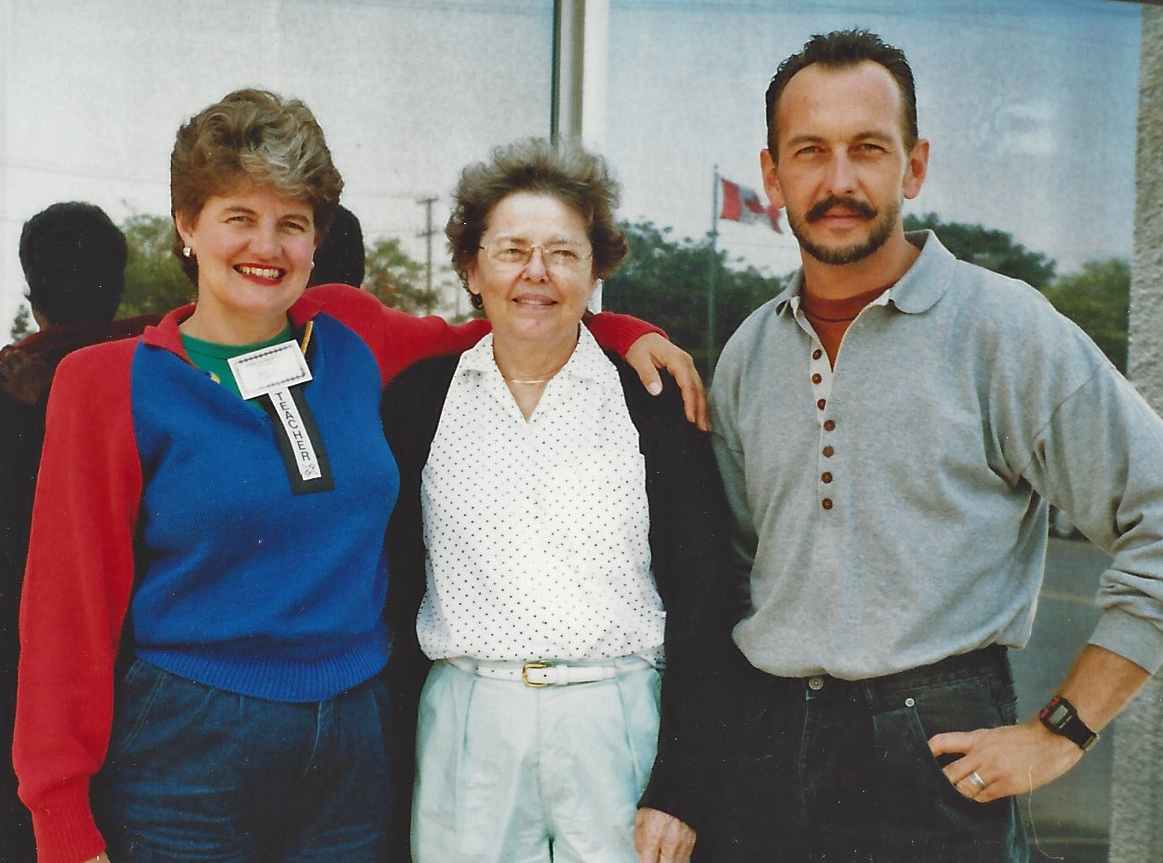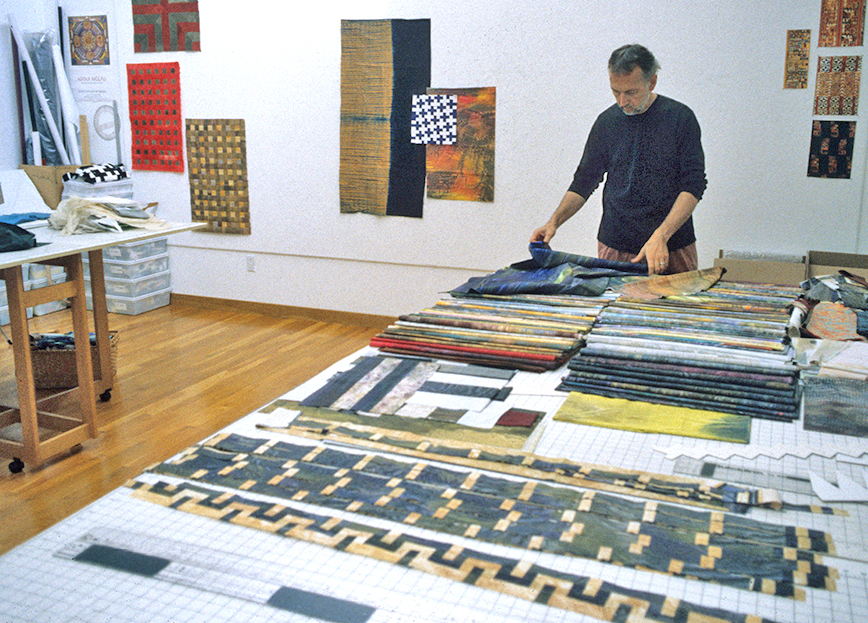
The Archives and Special Collections at the University of Nebraska–Lincoln Libraries has received a donation of more than 70 boxes of papers, correspondence and research materials from Michael James, professor emeritus and former department chair and Ardis James Professor of Textiles, Merchandising and Fashion Design. The materials encompass a nearly 50-year period during which a resurgence of interest in quilt making led to the development of the Studio Quilt or Art Quilt movement.
University archivist Mary Ellen Ducey described the donation as pivotal, adding depth to the existing holdings in the area and providing more knowledge about the artists, curators, gallerists and collectors active in the movement during the years when it coalesced as a branch of the larger domain of 20th-century studio craft.
“Michael James was a key figure in the early years of the Studio Quilt movement, and his papers document the ways in which that movement came into being and expanded in the last decades of the 20th century,” Ducey said. “We are so excited to add these papers to our quilt and textile research collections.”
The materials contained in the Michael James Studio Quilts Papers include direct correspondence with a host of artists who, like James, developed quilt-making practices that built on earlier traditions but broke new ground. Those artists include Nancy Crow, Radka Donnell, Pauline Burbidge, Terrie Mangat, Jan Myers-Newbury, Nancy Erickson, Mary Catherine Lamb and Ursula Rauch. Exchanges with quilt researchers including Cuesta Benberry, Sandra Sider and Robert Shaw are also included. The collection is international in scope and reflects activity throughout North America, Europe and Japan. Nearly all of the correspondence James had with the founding donors of the International Quilt Museum at Nebraska, Ardis and Robert James (no relation), is also included. Michael James first worked with Ardis James at the Brookfield Craft Center in Connecticut in the late 1970s and early 1980s, and that friendship eventually led to his joining the faculty at Nebraska in 2000.
James said the artist correspondence, interweaving business and personal content, constitutes the real core of the collection. The artists shared details of their family lives, working processes and design ideation, and provided one another needed feedback and encouragement. They built a community of innovative makers aligned with many of the values of the traditional quilt world yet independent of it, working toward different ends, James said.
“Future researchers will have insights into how we operated as nontraditional makers and as independent small businesses, although we didn’t always think of ourselves that way,” James said. “The letters, artist statements and related materials reveal our motivations and aspirations.”
James spoke about the authors of the letters and other materials in his collection with great admiration and affection. His letters from Oregon artist Mary Catherine Lamb — a prolific writer of missives sometimes three to five pages in length — are rich with humor, descriptions of her works-in-progress and the progress of the illness that would take her life in 2009. Ohio quilt artist Nancy Crow always wrote boldly, according to James, and her “force of nature” character comes through in her correspondence. Artist and author Radka Donnell, who lived and worked alternately in Switzerland and Massachusetts, began corresponding with James in the late 1970s, and her feminist perspective on quilts as women’s art had a big influence on James’ own thinking in that regard.
“If anyone wants to learn who these artists were, and about our relationships as colleagues, the letters and related materials give that insight,” James said.
The collection arrived at the Archives and Special Collections in late June, organized and indexed by James’ longtime studio assistant Leah Sorensen-Hayes, who spent much of the past three years curating and cataloguing the collection. In addition to the papers, the collection includes electronic databases that Sorensen-Hayes developed from James’ records detailing his entire body of creative work, as well as his exhibition history. Other items include James’ manuscript materials for several books that he published, numerous lecture transcripts and the content of slide presentations, documentation of exhibition development and planning, and logistical and specification materials related to numerous commissions that James executed over several decades.
James’ quilted fabric constructions have been recognized and exhibited internationally. They are included in the collections of the Museum of Arts and Design in New York City, the Boston Museum of Fine Arts, the Racine Art Museum, the Newark Museum, the Mint Museum, the Indianapolis Museum of Art, the Shelburne Museum, the Baltimore Museum of Art and the Renwick Gallery of the Smithsonian American Art Museum, among others. About 20 of his works are included in the International Quilt Museum’s collection, and several are included in the collection of the Museum of Nebraska Art in Kearney.
The Archives and Special Collections holds more than 75 quilt research collections. The scope and depth of these collections represent a major resource for the study of contemporary textile and quilt arts.
Research in these collections can be done by contacting the Archives and Special Collections — at 402-472-2531 or archives@unl.edu — and making an appointment.










